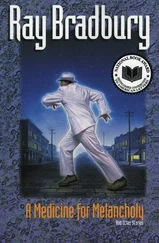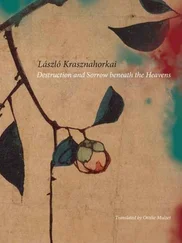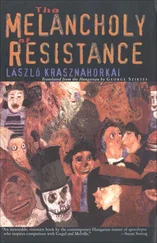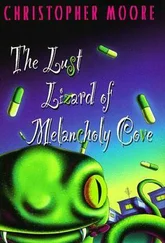It was never as obvious as in the Romantic era that individual freedom and the unsparing regularity of the existing world could be congruent. Inevitably, one of them had to prevail: if (as was usually the case) objective regularity won out, then the schematism adumbrated by Kant was asserted and the individual submitted to the world, obeyed the rules, satisfied the expectations, renounced his own definitive freedom and the possibilities inherent in his personality. If, on the other hand (as with modern genius), subjective freedom won out over objective regularity, then the world looked at this with suspicion: people tended to talk about madness or, with greater restraint, about abnormality, even in the case of manifest genius. It is always those who transgress the bounds of any given society that are regarded as insane, but only Romanticism suggested the idea that brilliance verged on madness. Aristotle’s theory of the golden mean seems to hold to this day. With Aristotle, melancholics were outstanding and endangered personalities threatened, on the one hand, by mania and, on the other, by depression. In modern societies, geniuses are likewise outstanding and endangered personalities, and they are threatened, on the one hand, by facelessness and a gray monotony and, on the other, by insanity. Aristotle’s perception seems pertinent to the present day: men of genius and melancholics are likewise people on whom fate has imposed greatness fraught with sadness. Greatness intimates the proximity of the threat of insanity. Beyond a certain point, greatness breaks through all frameworks when the person in question is no longer great but insane. (Which, of course, does not mean that every madman started as a great man.) Sadness, however, signals a risk of becoming jaded, of falling in line: not only does a great man die in just the same way as anyone else, but life also does all it can to divest him of his greatness and rank him among the mediocre — and not always without success. A genius is not insane, but not healthy either (at least not in the quotidian sense; for that reason, people who would like to label a genius as ill or healthy are mistaken). 7Geniuses are not sick, just not well. They vitiate this exclusionary way of looking at things because they are characterized by a state that implies a fundamentally different lifestyle and outlook. “Genius,” writes August Wilhelm Schlegel, “spans a person’s whole interior, and it consists of nothing less than the energy and innermost harmony of all that is autonomous and boundless ability in human sensitivity and intellectuality” ( Kritische Schriften und Briefe , 2:76). The genius and the melancholic are inseparable from each other: both stand at the boundary of human possibilities. They belong together. A melancholy genius dwells on the boundary: he is absolutely lonely, and this metaphysical solitude sets him apart from everyone. His loneliness is not the same as that of the mentally ill, who are closed and unapproachable, nor is it the occasional sense of loneliness of the healthy, which stems rather from a lack of company than from fate. “Nothing is sadder or more oppressive in the world than this situation: he [the solitary figure] is the sole spark of life in death’s broad dominion, the lonely center of a lonely circle” (Kleist, Werke und Briefe , 3:502). Kleist’s words do not relate to melancholics of genius in general, but to the solitary human figure in an oil painting by Caspar David Friedrich titled Monk by the Sea . The large painting depicts the tiny figure of a monk standing with his back to the viewer, in front of a vast sea and under an overcast sky. The solitary figure is the melancholic genius himself, born at the time of Romanticism. Friedrich, who according to reports from friends 8was characterized by the deepest melancholia and painted the most melancholy pictures of all time, had an infallible sense of all the touchstones of modern melancholia: metaphysical solitude, a compulsion for self-justification, suffering in self-enjoyment, a death wish merging into a fear of death, and a condition bordering on that of a genius.
The autonomy won from the world gradually crumbles; geniuses will become mad: either they become drab and monotonous, or they die from their own brilliance. Genius lasting over a long life is given to no one (except Goethe, who — with some justice — was prone to count himself among the immortals). Melancholic geniuses are well aware of their own fateful claims to individuality, their fated genius, as well as the trap the world sets for them — and the consternation, not yet assuaged by custom, as in the twentieth century, results in the voluntary acceptance of death and, together with that, the free indulgence in melancholia. Many Romantics died young; to elucidate the cause of their death, we need to turn to one of Friedrich’s paintings again: Chalk Cliffs on Rügen , possibly one of the most mysterious of all his pictures. He painted one of the chasms formed by chalk rocks on the Baltic Sea. The sea is a long way down below, bearing two ships. There is sunlight all around, and the white cliffs reflect the light. Near the edge are three people gazing down at the sea. On the left, a squatting woman is clutching at a bush; in the middle, a man is lying prone and peering down; and on the right is a second man, arms folded, standing on the root of a tree, the crown of which is dangling above the chasm. An undisturbed idyll. Yet as anyone knows who has passed by the rim of the chalk cliffs of Rügen, the scene depicted is probably augmented by dreamlike elements; the painter, who spent a prolonged period on the island, was well aware of the difficulty of venturing to the rim of those fragile cliffs: they begin to crumble and collapse on taking the slightest weight, carrying with them anyone who peers into the deep. Anyone standing on that cliff edge would no longer be standing there. The picture’s melancholy is derived from this. Maybe smoldering passion led the three figures to the unapproachable edge of the cliffs; Friedrich knew full well that the relationship of two men and one woman (even just their being together) was the most stirring, most passion arousing of all everyday social relations. The foolhardy or negligent figures are obviously not interested in the danger, or at least not the danger that threatens them directly. They are not afraid of death. They are gazing into the deep, but there is little doubt that they find the depths attractive — attractive because they recognize their own fate in the eddies down below. Indifference, foolhardiness, a passionate love of the deep, drew them here — and in the depth of the chasm, perceptible to us as well, they recognize the depths of their own inaccessible interiors. The interior and exterior depths merge — and the melancholic demeanor of the three figures is a signal to us, the viewers, that they are participants in an irreversible process: the outer and the inner, subject and object, have not separated in them, and the surrounding nature, interwoven with their own human nature, pours through their bodies, so to speak — bodies that are truly just a mortal coil; therefore, they should not worry about falling and destruction. “’Twixt fate and us there is but little space,” wrote Thomas Chatterton (“Ælla”), who killed himself at the age of seventeen.
Friedrich’s three figures are poised on the brink of death, but they are so casual in the face of perdition that they seem almost bored. Everything is enveloped in boredom, a basic characteristic of melancholia in the modern age and one of the key notions of the beginning of the nineteenth century, the period in which the picture originated. It is not a matter of being bored with this thing or that but of unending boredom with existence itself. The Don Juan of Nikolaus Lenau’s poem is so bored that he grants the gift of his life to his enemies and is even bored with the thought of dying. According to more than one entry in his diary, Byron was so bored that he did not feel strong enough even to commit evil or to blow his brains out. It was also he who wrote bitterly about Napoleon that rather than dragging the whole world down with him, the man was gradually sinking into insignificance. He preceded that with a comment: “Past events have unnerved me; and all I can now do is to make life an amusement, and look on, while others play” (18 November 1813; Letters and Journals , 2:339). On studying the French Revolution, Georg Büchner felt that the dreadful fatalism of history had all but crushed the individual, and the futility of glorious events led him to a realization: “I find an appalling uniformity in human nature, an inevitable violence in human relations. . The individual is just foam on the crest of a wave, stature a sheer accident, the reign of genius a puppet show, a ridiculous struggle against an iron law over which it is impossible to gain the upper hand” (Büchner, Werke und Briefe , 395). And in Danton’s Death , the cry goes up: “The world is chaos. Nothingness is the yet-to-be-born god of the world” (act 4, scene 5, trans. Gerhard P. Knapp). Büchner, who loathed life yet at the same time took “wild delight” in it, sensed that he would die early, and his fatal illness did not catch him unexpectedly. At thirty-two, Lenau went mad in his futile searching, in hopeless love, and in vainly waiting for the “song of the nightingale.” Byron did not blow his brains out, but he lived with such indifference that it is a sheer miracle that death waited until he was thirty-six to get him.
Читать дальше












